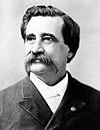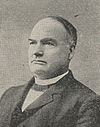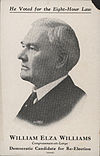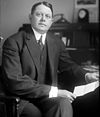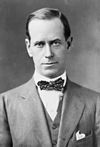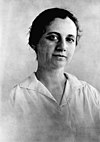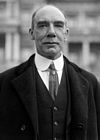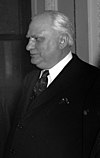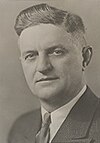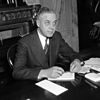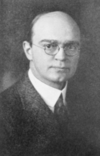Ohio's at-large congressional district existed from 1803 to 1813, from 1913 to 1915, from 1933 to 1953 and from 1963 until 1967, when it was banned by the Voting Rights Act of 1965.

North Dakota's at-large congressional district is the sole congressional district for the state of North Dakota. Based on size, it is the eighth largest congressional district in the nation.

From 1993 to 2023, Montana was represented in the United States House of Representatives by one at-large congressional district, among the 435 in the United States Congress. The district was the most populous U.S. congressional district, with just over 1 million constituents. It was also the second-largest by land area, after Alaska's at-large congressional district, and the largest by land area in the contiguous United States.

South Dakota's at-large congressional district is the sole congressional district for the state of South Dakota. Based on area, it is the fourth largest congressional district in the nation.
From its statehood in 1816 until 1823, Indiana was allocated only one representative, who was elected at-large. During the 43rd Congress, from 1873 to 1875, Indiana elected three of its thirteen representatives to the United States House of Representatives at-large from the entire state.
Beginning from its inception into statehood, New Jersey elected its representatives at-large instead of from individual districts. This continued for most years until 1843, with the exception of the years 1799-1801, and 1813-1815 when they were elected in districts. After 1843, New Jersey returned to district representation. Four at-large representatives were elected in 1789 until 1793 when a 5th representative was added. 6 seats were allocated beginning in 1803, continuing until at-large representation ceased in 1843.
Mississippi's 1st congressional district is in the northeast corner of the state. It includes much of the northern portion of the state including Columbus, Oxford, Southaven, Tupelo, and West Point. The University of Mississippi is in the district.
At different times in its history, Washington elected one or more U.S. representatives at-large statewide.
Michigan's at-large congressional district may refer to a few different occasions when a statewide at-large district was used for elections to the United States House of Representatives from Michigan.
During the first twenty-four Congresses, Connecticut elected all its representatives in Congress from a single multi-member Connecticut at-large congressional district.
Nevada's at-large congressional district was created when Nevada was granted statehood in 1864, encompassing the entire state. It existed until 1983, when it eliminated as a result of the redistricting cycle after the 1980 census and subsequent reapportionment in which Nevada was awarded a second seat in the House of Representatives. Nevada began electing two representatives from separate districts commencing with the election of 1982 and the 98th Congress.
Arkansas's at-large congressional district was a congressional district for the United States House of Representatives in Arkansas from 1836 to 1885.
Florida's at-large congressional district may refer to a few different occasions when a statewide at-large district was used for elections to the United States House of Representatives from Florida. The district is obsolete.
From December 28, 1846, to March 3, 1847, the new state of Iowa was represented in the United States House of Representatives by two representatives who had been elected on a statewide basis, rather than by districts.
On three occasions in New York history, some members of the United States House of Representatives were elected statewide at-large. This was due to an increase of the number of representatives after the previous federal census, and the failure of the State Legislature to re-apportion the congressional districts in time for the next election.
From statehood in 1912 to 1969, New Mexico did not use congressional districts for its representatives to the United States House of Representatives. Instead, it elected its representatives statewide at-large.
After statehood was achieved on September 9, 1850 and until 1865, California elected its congressional representatives statewide at-large — two representatives from September 11, 1850 to 1861, and 3 representatives from 1861 to 1865.

Idaho's 2nd congressional district is one of two congressional districts in the U.S. state of Idaho, in the eastern portion of the state. Beginning with the 2012 election, the district expanded westward and now includes most of Boise, the state capital and largest city. The district is currently represented by Mike Simpson, a Republican of Idaho Falls. A former dentist in Blackfoot, he was first elected in 1998; the seat opened when his predecessor Mike Crapo successfully ran for the U.S. Senate.

Idaho's 1st congressional district is one of two congressional districts in the U.S. state of Idaho. It comprises the western portion of the state. The 1st district is currently represented by Russ Fulcher, a Republican from Meridian, who was first elected in 2018, and re-elected in 2020 and 2022.





